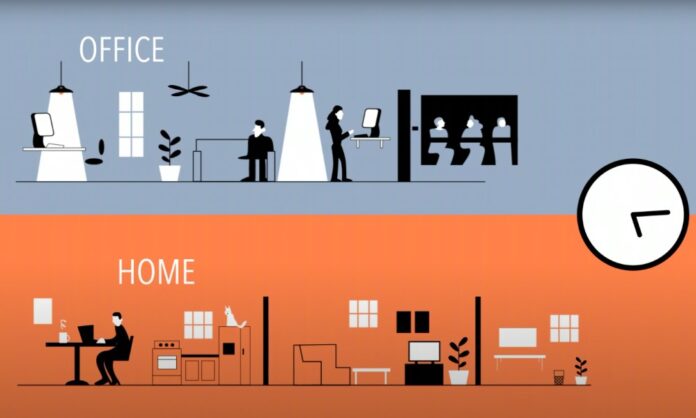***This article originally appeared in the February ’23 issue of Animation Magazine (No. 327)***
Now that the world has more or less settled from the major shockwaves caused by the pandemic, the entire global workforce is starting to realize that working from home may be forever more and things may never go back to the way they were.
And my question is: Even if they could, should they?
Other than missing out on in-person camaraderie, staff and business owners have certainly, by now, realized that paying for a giant building and requiring hundreds of people to commute to and from work is not only unnecessary, but as it turns out, is almost unanimously counter-productive and less profitable than an autonomous approach.
And it only makes sense. It’s hard to fathom the amount of time unnecessarily wasted by pre-pandemic commuting, only to sit in a cubicle to use a phone and/or computer which is quite possibly inferior to the one you have at home or even carry around in your pocket.
Sadly, commuting one to three hours one way is still a reality for some even in today’s work environment. That’s up to six wasted hours per day that could be recaptured and used to be more productive and live happier lives if they were to work at home instead.
In addition to reducing or even eliminating time wasted by unnecessary commuting, there is an incomprehensible amount of money that has been saved by reducing the burdens that over-reliance on transportation causes. And let us not forget Mother Nature in this equation: The copious amounts of fuel required to transport the working population of an entire country across town, sometimes even across borders, just for the sake of clocking in at a building far from home — and then back again — produces Earth-choking amounts of toxic fumes and a host of other sinister pollutants. Now, in an environment where commuting has been greatly reduced, there is room for Mother Nature to breathe just a little easier.
Trepidation: Meet Results
One of the biggest fears for upper management having staff suddenly required to work from home was loss of productivity. However, it turns out that in many (if not most) cases, productivity actually improved. One example of this is a study by Stanford which showed that working from home increased productivity by 13%. Improvements like this greatly contribute to a company’s bottom line, which means things will probably never go back to the way they were. What business owner, seeing a company-wide boost in productivity and resulting profit, would ever want to go back to operating the way things were pre-pandemic?
Trust was the other concern. Supervisors that were used to monitoring staff by peering over their shoulder worried they would lose control of their workforce and have difficulty communicating. However, with unlimited free email, group chat rooms, remote logins, electronic timecards and plenty of phone and video conferencing options available, trepidation about the loss of management’s ability to supervise staff members at home was swiftly quelled.
With almost every economy in the world being connected by an internet that travels near the speed of light, it just makes sense that every person who can work from home should work from home.
There will always be those that hold onto pre-pandemic beliefs about how businesses should operate, but they may soon become the minority. Today, when someone tells me they just moved into a 40,000 sq. ft. building, my initial reaction is not as it once was, “Wow, that’s impressive, you must be successful!,” but rather something more along the lines of, “Is that really necessary?”
Even Uncle Sam has joined the party. High-level government agencies have already experienced great success with staff members being allowed to work from home. Ironically (sarcastically) enough, productivity has increased as in the private sector, morale has improved, and indirect costs and expenditures have shown a decrease.
Some companies certainly need large spaces to operate, but for every person that can perform their duties remotely from a home office the entire world stands to benefit. A mass reduction in the number of people required to commute to and from work on a daily basis has significantly reduced the burden on our economy, our environment and our personal lives. What say we continue down this path to free up even more resources so we can reallocate them to focus on what really matters: improving the quality of life?
Martin Grebing is the president of Funnybone Animation Studios. He can be reached at funnyboneanimation.com.




 Win a Funko X Lilo & Stitch Prize Pack!
Win a Funko X Lilo & Stitch Prize Pack! 
